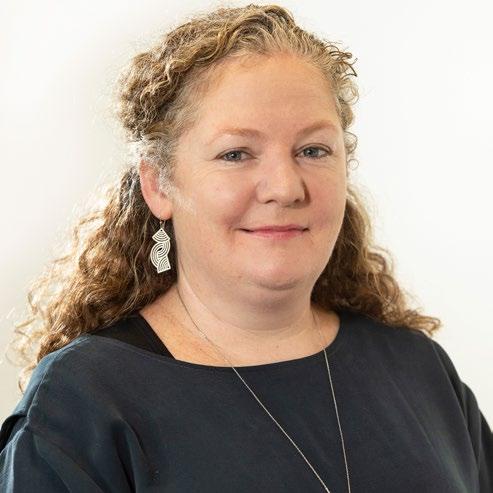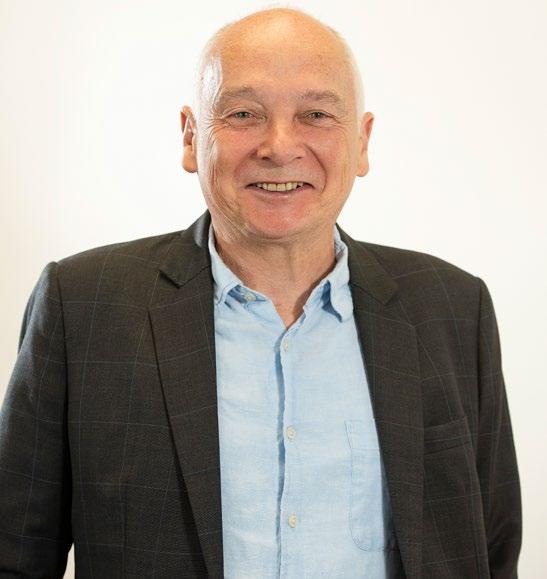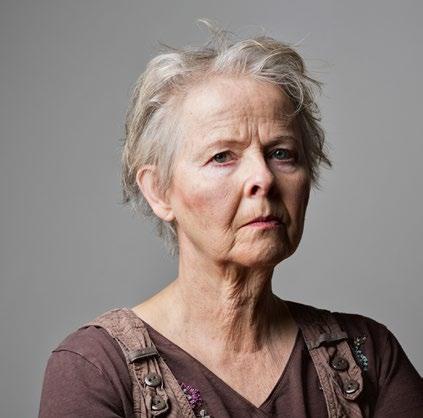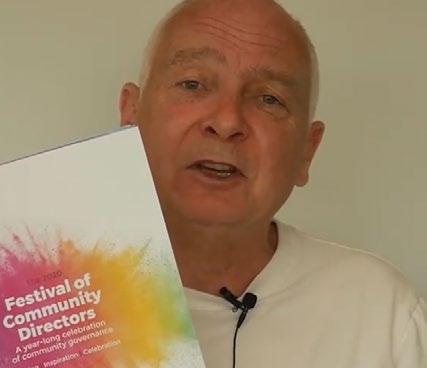
7 minute read
MYTHBUSTER: “BUSHFIRE CHARITIES SPEND TOO MUCH ON ADMIN” AND OTHER STORIES
BY KATHY RICHARDSON, EXECUTIVE OFFICER, OUR COMMUNITY
It’s been a rocky ride over recent months not just for people directly affected by Australia’s bushfire emergency, but for the charities, not-for-profit organisations and community groups that have rallied to respond.
The chain of events that comes after such a disaster follows a familiar pattern, and now we’re seeing it play out again. It goes like this: • Shock, horror, an impulse to help, and an outpouring of donations (both money and goods)
• A request by those receiving donations of goods for people to please stop sending those things
• Indignation from those who want to keep giving second-hand clothes, old furniture etc for the “bushfire victims”
• More money pouring in to the highest-profile charities
• Complaints from grassroots charities that they’re doing a lot of the heavy lifting on the ground but missing out on donations • Complaints from the victims that the money that’s been donated is not being distributed quickly enough
• Complaints from donors that the big charities are spending too much on administration • Complaints from donors that the small charities are not organised enough
• News reports about scammers getting their hands on donations intended for those affected by the bushfires • Grief and anger. A lot of work. And slowly communities rebuild.
Underpinning much of this reaction is a complete misunderstanding in the public mind about what makes for a “good” charity. To me, the answer is simple: a good charity is an effective charity. You can’t be effective if you waste money, so that’s a given. But few charities do waste money, in my experience, so that’s a red herring.
How do we know if a charity is effective?
Okay, if we accept that a good charity is an effective charity, how do we know whether a charity is effective?
In 2014 I was awarded an Eisenhower Fellowship to study systems for ranking and rating not-forprofits, with a particular emphasis on outcomes. Through 55 meetings in 10 states of the US across seven weeks, I learned a few things.
This summer, the bushfire emergency prompted me to summarise my findings in a Twitter thread. Here’s an edited version of that thread.
1. The US has a vibrant not-for-profit information ecosystem, but many agencies are struggling. Two key challenges: a) how to maintain independence when you need to bring in $$ for survival; b) how to “rank” when you don’t have universal (meaningful) metrics to benchmark against. 2. There’s a trade-off between rigour and scale. The bigger the list of ranked orgs (e.g. Charity Navigator, Guidestar), the less detailed and independently verified those listings can be. Perhaps the most rigorous, Givewell, lists only a handful of orgs.
3. Using overhead ratios to measure the effectiveness of a not-for-profit is not smart (we all know this, right?). I care less about how much a not-for-profit pays its CEO than about how good it is at creating the kind of world I want to live in. Can we move on from this already? 4. To get to grips with a not-for-profit’s effectiveness we need to understand a) the outcomes it wants to achieve, and b) how it will track progress. Application of metrics is only one way to achieve part b. There must be a place for stories. But also it can’t be only about stories. 5. As @meansandrew says so well, not-forprofits that are in the business of social change need to shift from “selling their success stories” to “selling their impact”. If you don’t like the business language, try this instead:
6. Not-for-profits that are truly missionfocused need to stop picking their best results to demonstrate the work they do and start trying to understand the full picture – what works, and why (and what doesn’t work and why).
7. Many organisations are actually doing this, and doing it well. But they don’t always share that info – because they’re scared (rightly) that they’ll be punished for telling the truth.
8. So not-for-profits have to get better at telling the truth about what works. And everyone else (the public, funders, the media) has to get more comfortable with mess and nuance and two-steps-forwardone-step-back outcomes – in the interests of progress. 9. We all have to start pushing together. Aggregation offers an opportunity to scale –
Evaluating a bushfire is relatively easy: it’s burning, it’s extinguished, or it’s smouldering somewhere in between. Evaluating a charity’s impact is not so easy.

which is a key to accelerating progress. We have to get many, many organisations a) talking the same language and b) sharing their insights in a way that’s meaningful and interrogable.
10. At Our Community, we started by introducing a social sector taxonomy: ourcommunity.com.au/classie
11. Data science provides huge opportunities for accelerating progress but it’s not a panacea. Somewhere in the middle of the two extremes – being a “data moderate” (see @theasnow) – is the space we probably want to be in.
12. Data science is useless without context. In fact, it’s worse than useless (leading us down false paths). Subject matter expertise is imperative to understanding what the data is telling us, and working out how to apply those lessons.
13. Many not-for-profits dismiss the notion that we can evaluate or track social outcomes and impact. They point to dumb conclusions arising from dumb metrics. That’s true. That happens (a lot). 14. But not-for-profits that dismiss the shift to evidence-based practice entirely are missing a huge opportunity (and may get left behind by institutional funders*). A noaction strategy is not a good option. Critique the methods, but don’t opt out. Come up with better methods 15. *I am talking about institutional funders specifically. Individual donors (generally) don’t make better decisions about giving to not-for-profits because someone gave them better info about not-for-profits. People donate through their hearts, not their heads.
16. In any case, many funders are growing increasingly impatient with “going by feel” ways of practising. The demands for evidence are getting louder. 17. These shifts are not without pain. Many funders are pushing not-for-profits to provide evidence that their work is effective, but are not willing to fund the work required to assess that properly.
19. There are ways for individual orgs to get to grips with their outcomes (not all requiring a double-blind randomised control trial) and many are doing so. But they are largely individualised, siloed efforts. A major challenge is to help each organisation learn from each other.
20. Some work is being done to draw together the threads (the Campbell Collaboration is an excellent example). But we need to do more.
21. We also need to do more to make it easier for not-for-profits to articulate their outcome goals and track their progress. There are some decent tools around for that, but they’re often unaffordable for grassroots orgs (who are punished for spending money on anything beyond essentials). 22. Those tools are also often too complex for groups to implement. We know that “to scale it must be simple” – but tracking cause and effect in relation to social progress is not simple. So instead it needs to appear simple. 23. To make the complex seem simple is really hard. At Our Community we’re grappling with this as we build the Outcomes Engine that will soon be plugged into our grants management system, @SmartyGrants. But we’re getting there.
24. In the end, we’re talking about human beings. None of this works – none of it – without thinking about and allowing for human behaviour (both on the side of those delivering the programs, and those participating in them). This can’t be an afterthought. 25. Also, we have to get down and dirty. We can’t do this stuff in ivory towers, in theory, or in isolation from the pointy end. Everything we do – everything – must be tested in the real world.

Our Community executive officer Kathy Richardson. Picture: Ellen Smith
26. And we have to bring people along with us – we have to find out what matters to not-for-profits (and their communities) and build tools that will help them do their jobs better, not force them to use tools they find onerous or irrelevant to their work.
27. We must focus on the “so what?” of data. We have to focus on what’s useful, as opposed to what’s interesting. And we have to keep ethics at the core of this work. That can’t be an afterthought either.
28. Gold star if you made it this far. Thanks to @tompkinsstange whose tweet prompted me to re-live my 2014 @EF_Fellows journey. You can read more about that here: youcantbelievewhatyouread.wordpress. com/2015/01/.
Kathy Richardson is executive officer and chief chaos controller at Our Community. You can follow her on Twitter.










